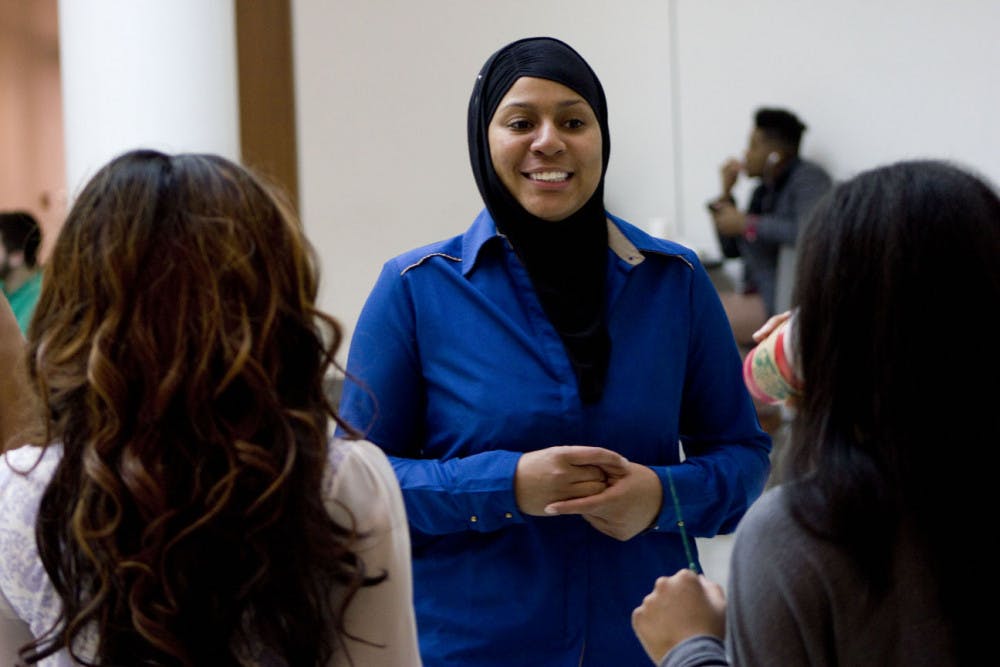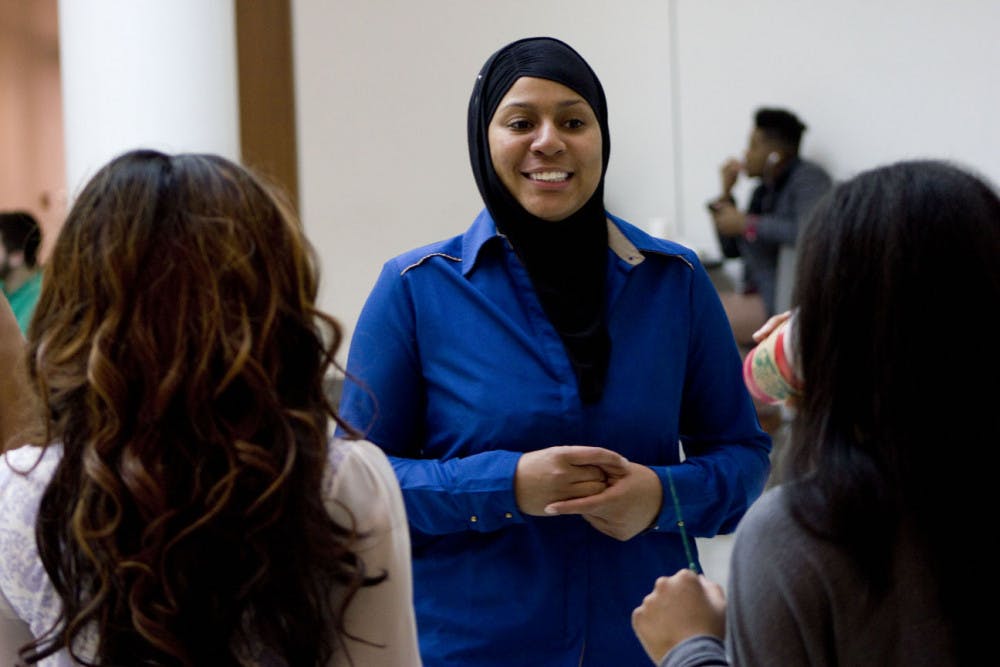
Noor Taylor explains to University of Memphis students that, contrary to popular belief, the hijab is worn as a choice by Islamic women to show religious commitment, not because they are forced to.
Students from the Muslim Student Association talked faith and religious garb Tuesday during their celebration of World Hijab Day.Â
The international day gave University of Memphis students a chance to try on a headscarf and also helped students at the U of M understand why Muslim women wear headscarves, said Noor Taylor, 22, criminal justice senior and member of the Muslim student group.Â
“A lot of people don’t know or are confused about why we wear hijabs,†Taylor, who has worn a hijab for nearly three years, said.Â
Some people assume that women are forced to wear a hijab by their families, Taylor said.Â
“In Islam, women are supposed to wear a hijab, but it’s not forced,†she said. “It’s for those who are ready to submit completely to God.â€Â
Taylor, born in San Juan, Puerto Rico, discovered Islam when she was 17-years-old. She’s the only person in her family to convert to Islam.Â
There are plenty of Muslim women who do not wear hijabs, as wearing them can sometimes be difficult, Taylor said. When Taylor started wearing a hijab, she immediately noticed some people she once thought were her friends stopped hanging out with her.Â
“A lot of people asked me ‘When did you become Muslim?’†she said. “I gained a lot of friends as well, but religion should not separate people.â€Â
The first six months of wearing a headscarf was a struggle, Taylor said. But she became comfortable with it and began to see this religious practice as an important part of her faith.Â
“Women are the face of Islam,†Taylor said. “When you see a Muslim man, they may not know right away that he’s Muslim. They see him as a person. But when someone sees me, they automatically know I’m a Muslim. We are recognizable instantly.â€Â
Being the face of anything can be very stressful but also important, Taylor said.Â
“People are going to look to you to see what you do,†she said.Â






